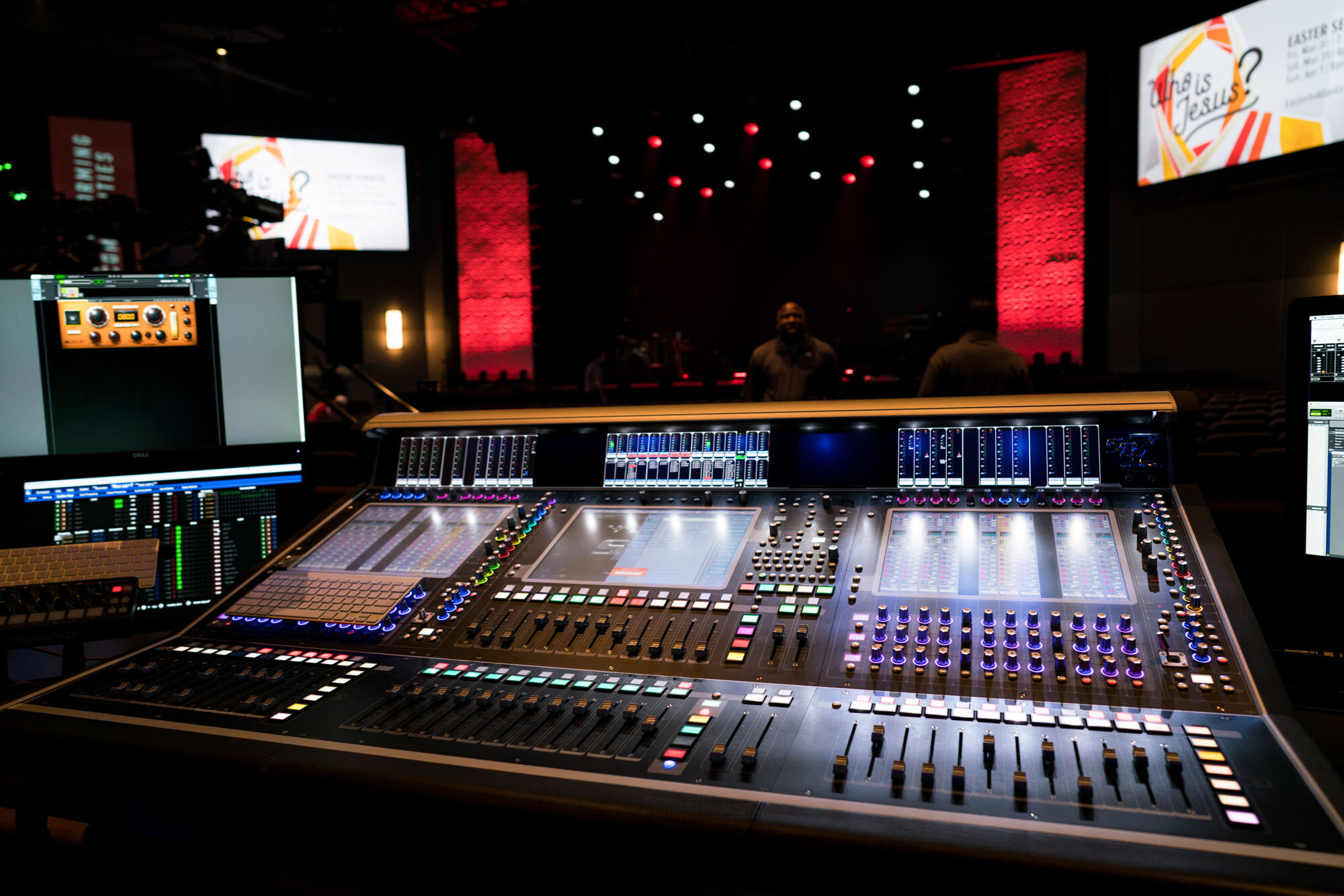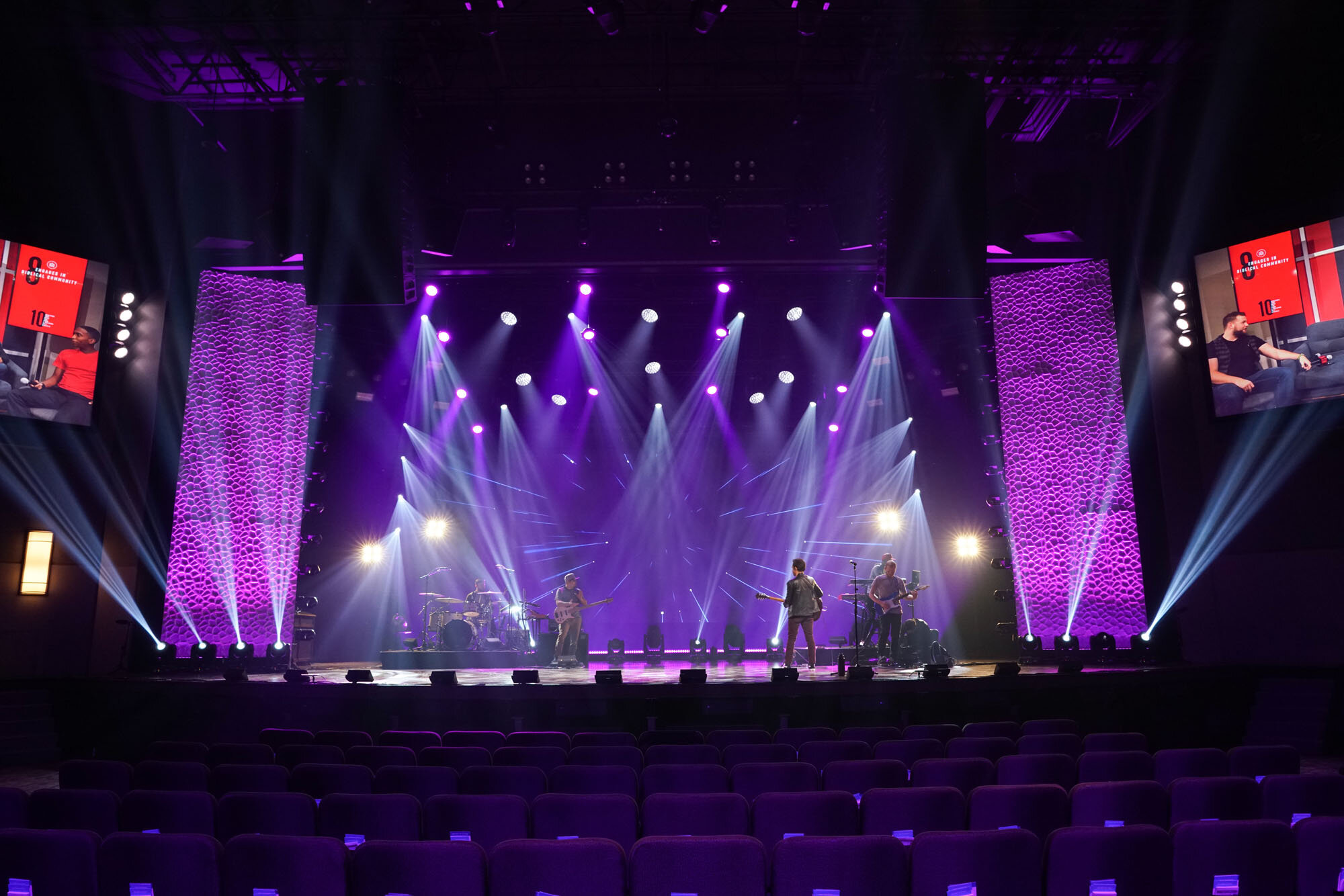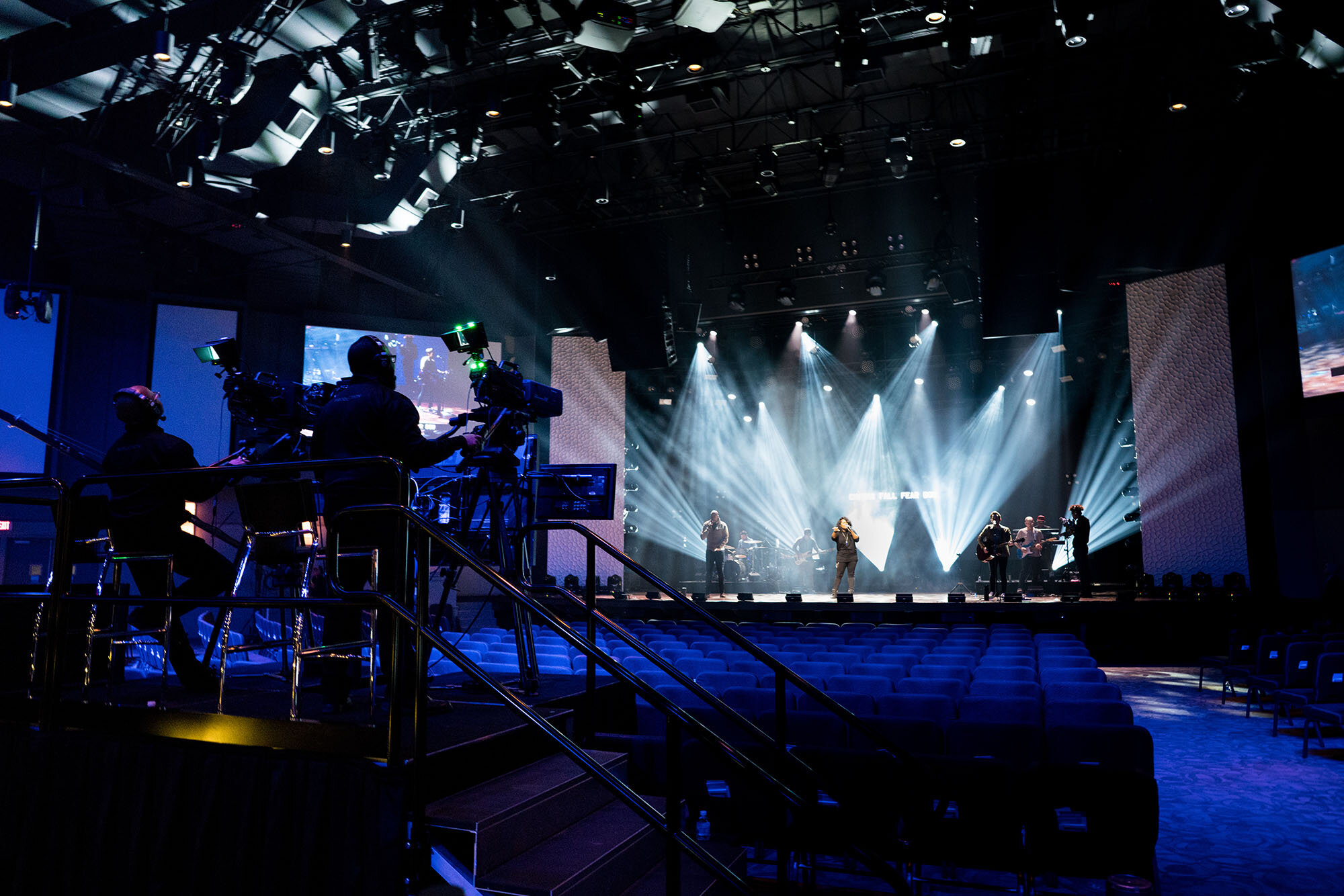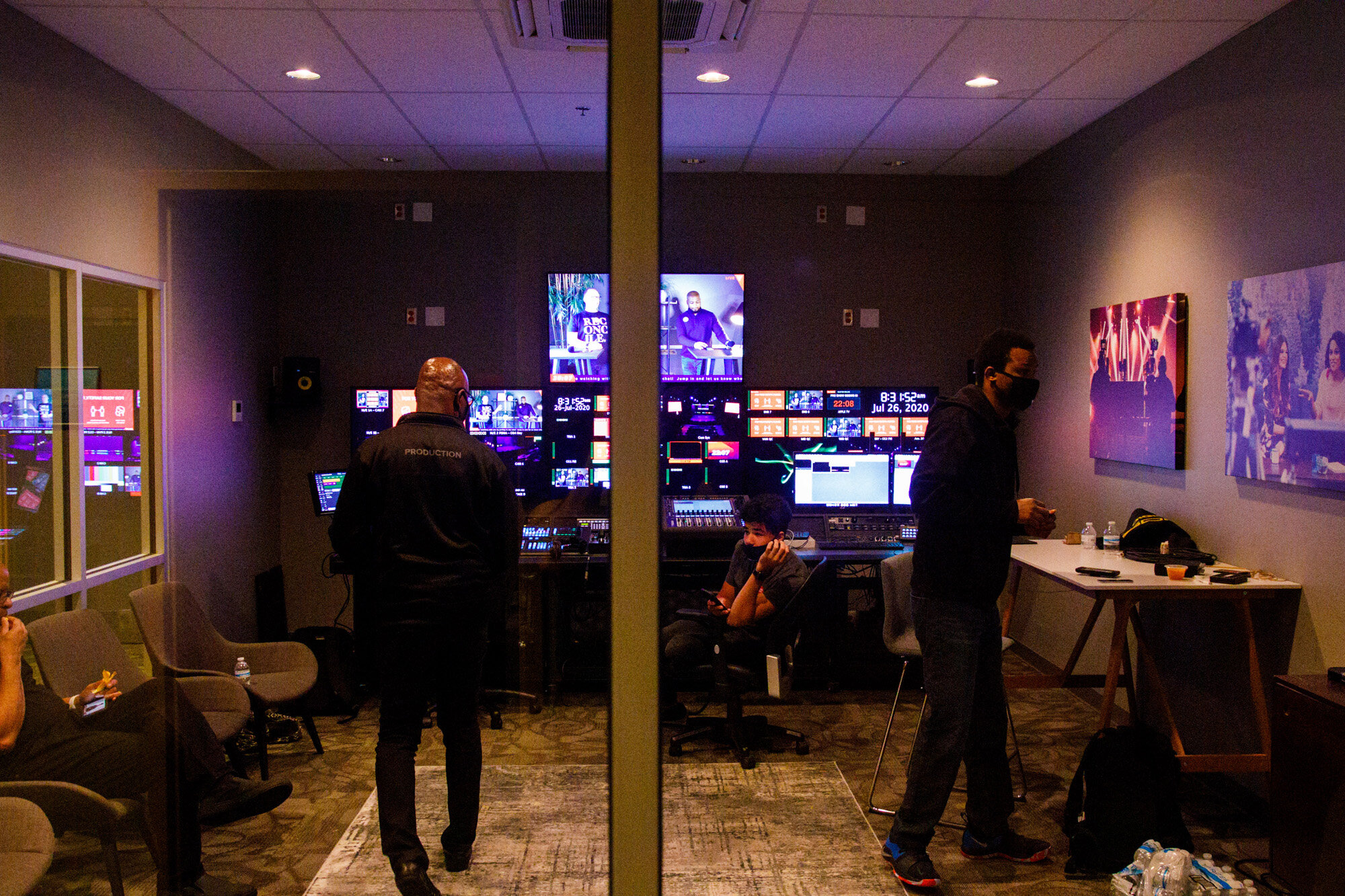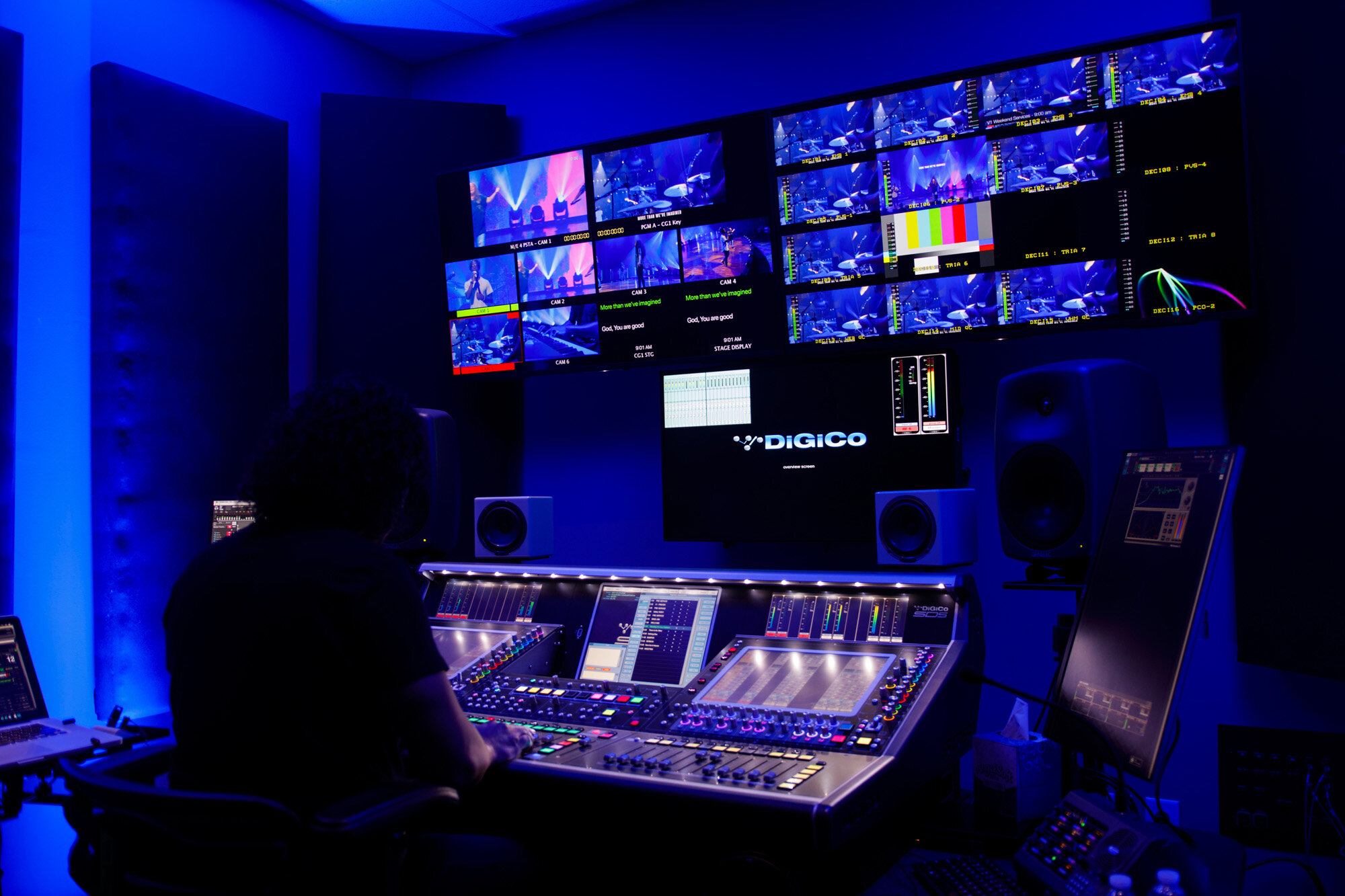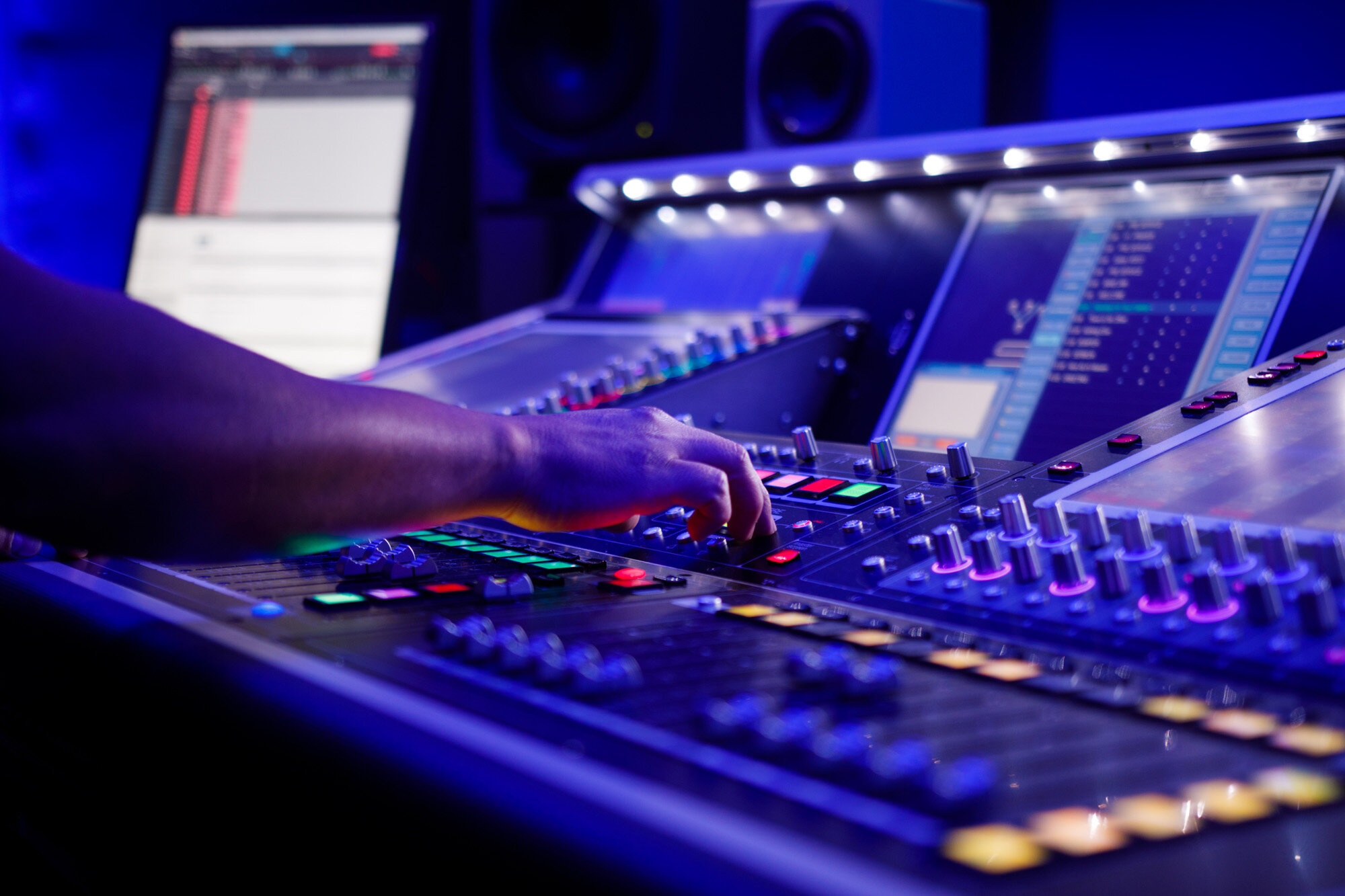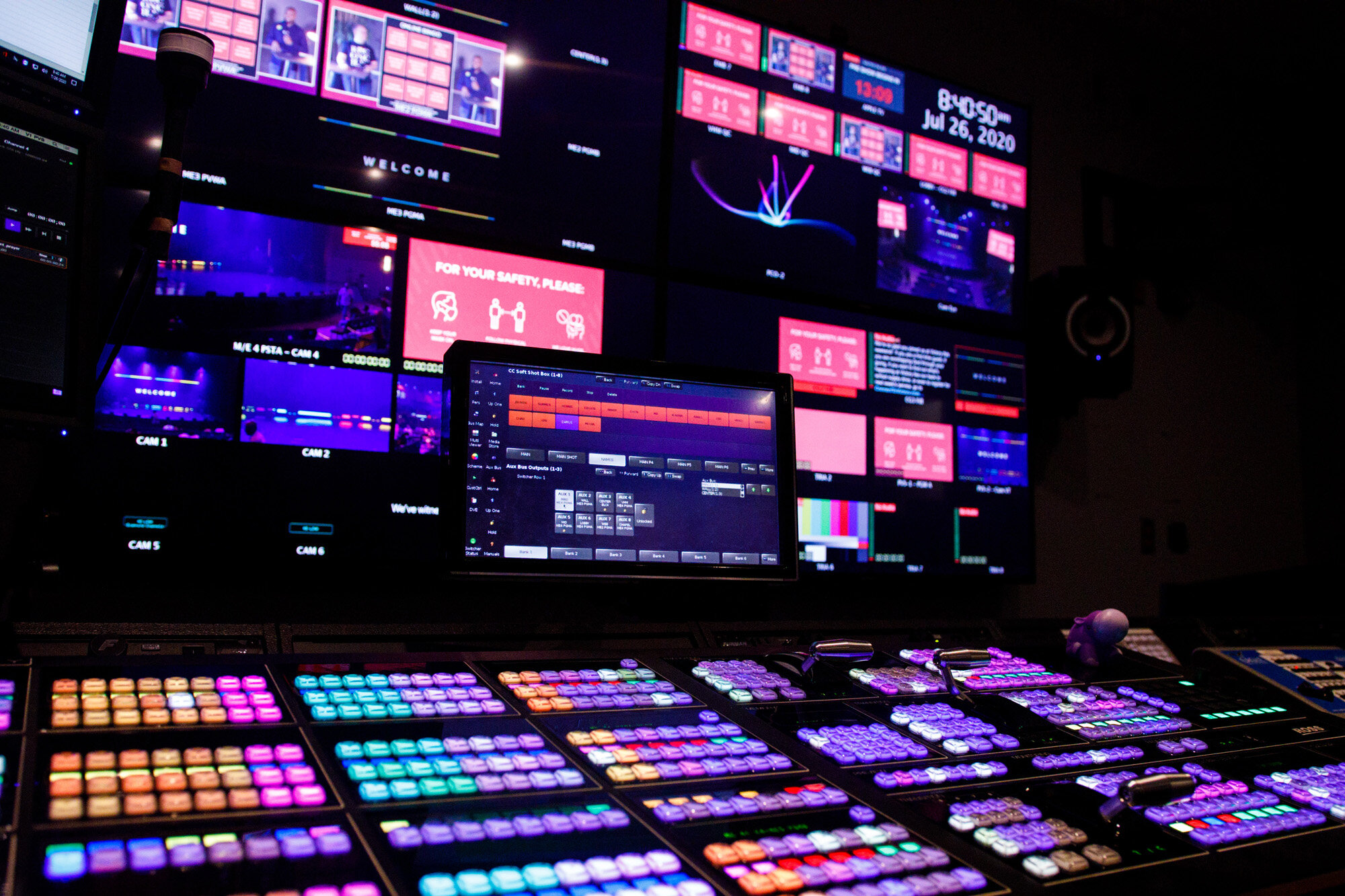Victory Church
Norcross Campus
Project Details
1,600 seat auditorium
Two broadcast video control rooms
Audio, video, and lighting design and installation
UNDERSTANDING CULTURE & VISION IS WHAT MAKES CLARK DIFFERENT
Thirty years ago, Pastors Dennis and Colleen Rouse held the first service in their small apartment in Norcross, Georgia, with just six people attending. Since then, Victory Church has grown into a multicampus house of worship that welcomes more than 16,000 worshippers each weekend. Listed 57th in 2010 by Outreach Magazine's 100 Largest Churches in America, the ministry has expanded beyond its main Norcross campus, with its 1,600 seats and 1,000-seat overflow areas to encompass Victory@Hamilton Mill in Buford, which has a 600-seat auditorium, and the Midtown Atlanta location, a portable church currently meeting at a temporary site.
One constant for Victory Church has been an association with Clark, which most recently designed and integrated the video systems for the Norcross church’s newly launched online virtual campus. Control Room B, built in August, 2019 in the Norcross location, utilizes the same core platforms that serve Control Room A there, which was also designed and integrated by Clark, in 2015. That installation brought the church’s video into the HD realm, when Clark specified and integrated Ross Video Acuity video switchers, a Grass Valley Nvision router, and Ross Video Tria video servers, as well as Hitachi SK-HD1000 and SK-HD1800 cameras. Control Room B relies on those same core Ross, Grass Valley and Hitachi systems, with separate control and work surfaces that allow the online campus director to create unique, custom programming that’s streamed before, during and after the main Sunday services, whose in-church video and audio and broadcasts are managed from Control Room A. Clark’s designs offered the church significant cost savings by letting these core platforms service both control rooms.
“We’re a very technically aware church — we do a lot of our own lighting and rigging, and we’re also very dynamic — our services can go from high energy one minute to a single voice speaking the next,” observes Nathan Williams, who has been the church’s Senior Technical Director for the last 15 years. “We needed an integrator who can be a partner, not just a vendor, and that’s what Clark has been for us.”
In fact, Clark and Victory Church came first came together in 2008 when the integrator came to the church’s aid in the wake of a fire at a church building. “They were not the AV integrator we had been using at the time but Clark stepped up and helped us get back on our feet and ready for the next weekend’s service,” Williams recalls. “And within a year or so they were our regular go-to integration partner.”
Flexibility For Services
The newest control room is now part of a production suite in Norcross, with an ergonomic design that encourages collaboration and ensures a smooth live-service experience for churchgoers. This includes high-energy music through the auditorium’s sound system and video across three large LED screens, for which Clark did the cabling and programming, as well as over 300 moving-head light fixtures, installed and programmed by the church’s staff, which add visceral excitement to the worship service.
“A Victory Church service is going to vary from week to week, so we needed technology and a control-room design that gave us a lot of flexibility,” Williams explains. “Clark’s product choices, programming, and room-workflow designs made all the difference, such as the Ross Acuity switchers, which let us send different content to different screens in the room, as well as to the displays at our satellite campuses and over the internet. We’re not constantly thinking about which image goes to which screen’s middle or lower third — it frees us up to be creative. And that lets the service be much more engaging.”
That extends to audio, as well. A new Digico SD11 console in Control Room B, installed and commissioned by Clark, mixes the sound for the online pre-, mid-, and post-show production, taking a feed of the mix of the actual worship and message from the SD5 broadcast console located in Control Room A. The new console in Control Room B also manages the matrix for the church’s Clear-Com Eclipse intercom and IFB system.
Control Room B has added new dimensions to the online services. “The announcements made in the church aren’t of interest to someone watching over the web in, say, Chicago,” says Williams. “Now we can use those moments to create new content that better communicates our message. It’s using the same core technology platforms as Control Room A, but it has its own workflow. It can create a whole new show.”
Mike Paschal, Victory Church’s Live Video Director, says Control Room B has only become more important during the pandemic, as it’s used to connect with other online applications such as chat rooms and social media. “That room came about because we wanted to grow our online audience, but it had to happen within a certain budget and not interfere with services or other events,” he explains noting that two major conferences at the church took place during the installation. “The goal was also to patch into the existing system, so Clark also had to run additional fiber to the Hitachi cameras and other drops. They did it all within the budget and we never missed a beat in terms of scheduling.”
A Dedicated Online Campus
Where many churches use streaming to simply extend their regular services online, Control Room B is designed to allow Victory Church to build an entirely new virtual campus, using the same technology platforms to create unique content for online worshippers. It’s an approach that deepens engagement, says Bob Nahrstadt, the system designer for Clark for several projects at Victory Church. “Many churches use webcasting as an adjunct to physical services, as basically ‘overflow’ from the auditorium,” he says. “Victory Church is using it strategically, to build an online campus, and with specific, unique content for it.”
Where many churches use streaming to simply extend their regular services online, Control Room B is designed to allow Victory Church to build an entirely new virtual campus, using the same technology platforms to create unique content for online worshippers
Interestingly, the seeds for Control Room B were planted back in 2015, when Clark Productions was working with Williams and Mike Paschal, the church’s video director, on the original Control Room A. “At the time, none of us had any idea what the church would be doing several years in the future when it came to streaming, but we all felt that it was important that the space and the technology be able to accommodate that future,” says Nahrstadt. For instance, the Acuity switcher was chosen in part because it allowed for an expanded number of multi-effects (ME) busses: the original three on board has since expanded to six MEs, able to incorporate media such as scrolling Twitter feeds. Meanwhile, he adds, “The Nvision router’s 288 X 576 matrix potential capacity seemed like overkill at the time, since only half that was loaded initially. But today it’s operating at over 90-percent capacity, with numerous destination feeds.”
Understanding the Client’s Culture
That kind of collaboration with a client’s vision goes far deeper than technical specifications. It requires that the integrator understand the client’s culture. Nahrstadt points to the sanctuary’s Meyer Milo sound system, which Clark also designed and installed nearly a decade ago, and which is considered one of the first and one of the leading touring-level systems adapted for installed applications.
“Victory Church is unique in a lot of ways, including that they were a multicultural congregation very early on,” he explains. “At a time when most churches that had contemporary worship-music styles were playing pop styles, Victory Church was incorporating hip-hop into its music. What we did around that was not only choose a sound system that was well-suited to that style of music” — the system design included eleven Meyer 700HP subwoofers — “but we also calibrated the system for both the music they play and for the nuances of the rooms they play it in. Ed Crippen, our calibration specialist, is able to match a sound system to a room in a way that few can, and you can hear that in Victory Church. He really understands how speakers interact with the environments they’re used in.”
Williams describes Victory Church’s relationship with Clark as perfect for AV in a church.
“We have a very good idea of what we want our AV technology to do, and Clark is the one we turn to to tell us what we’ll need to make that happen,” he says
“What I especially like about them is that they work often with large churches, so their ideas are already tested at the kind of scale we work with. At the same time, their attention to detail, right down to color-coding cables, is excellent. It’s a great combination.”
